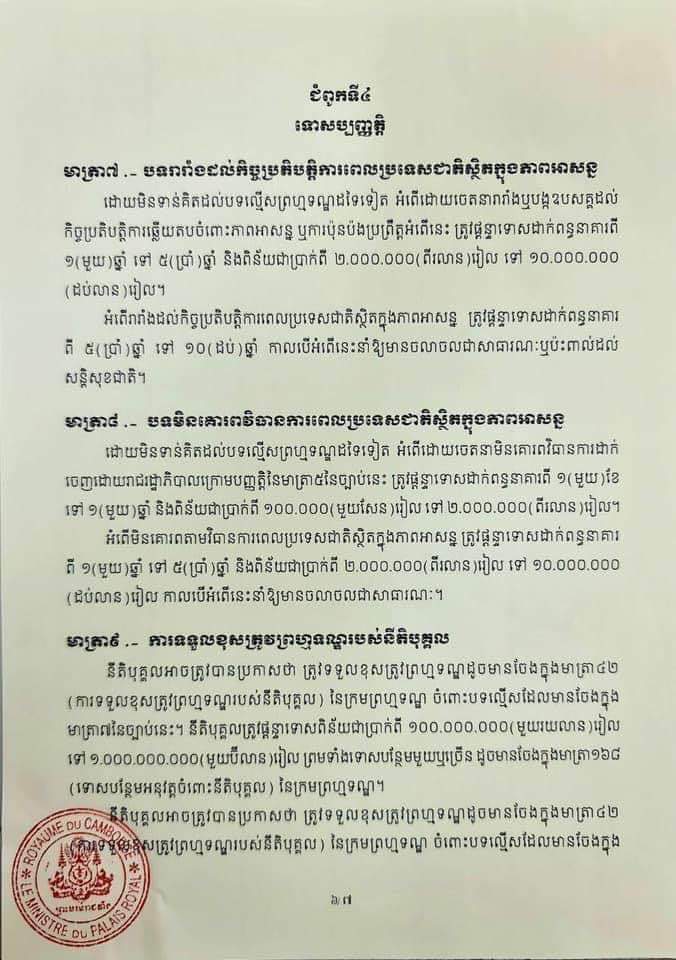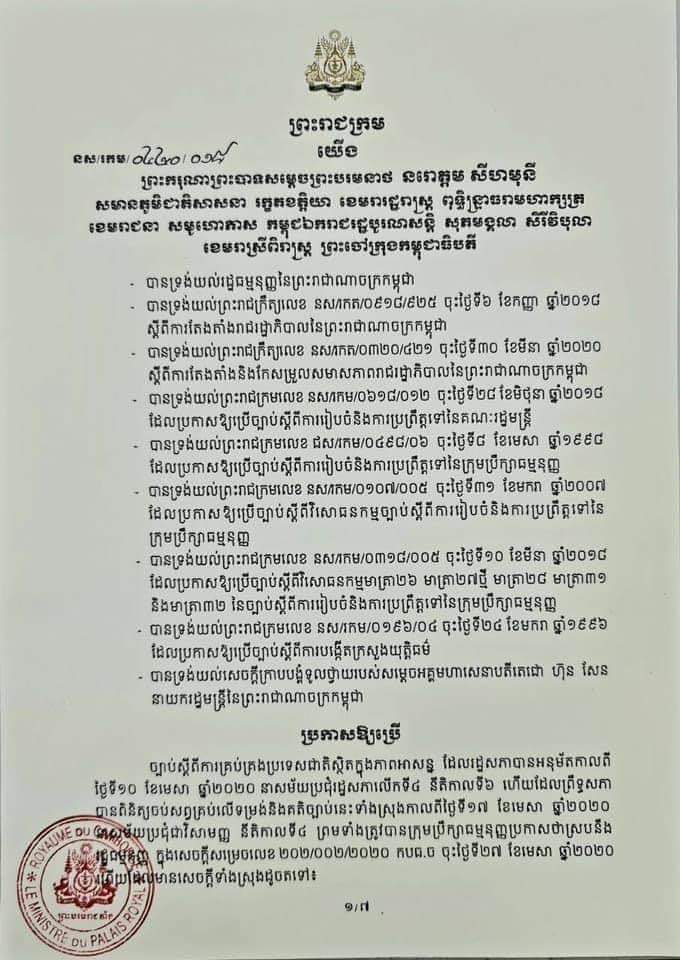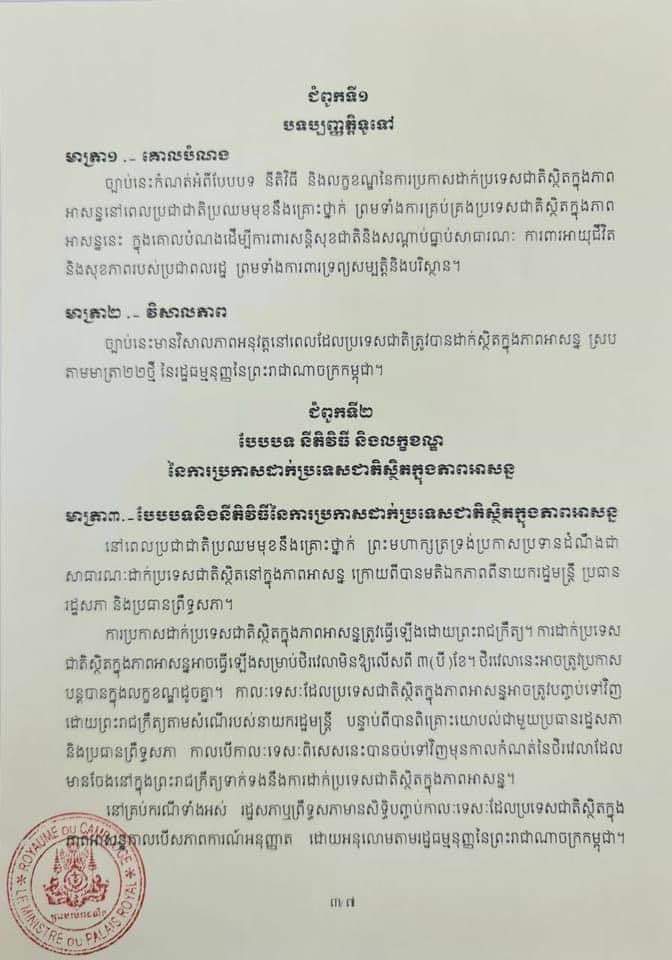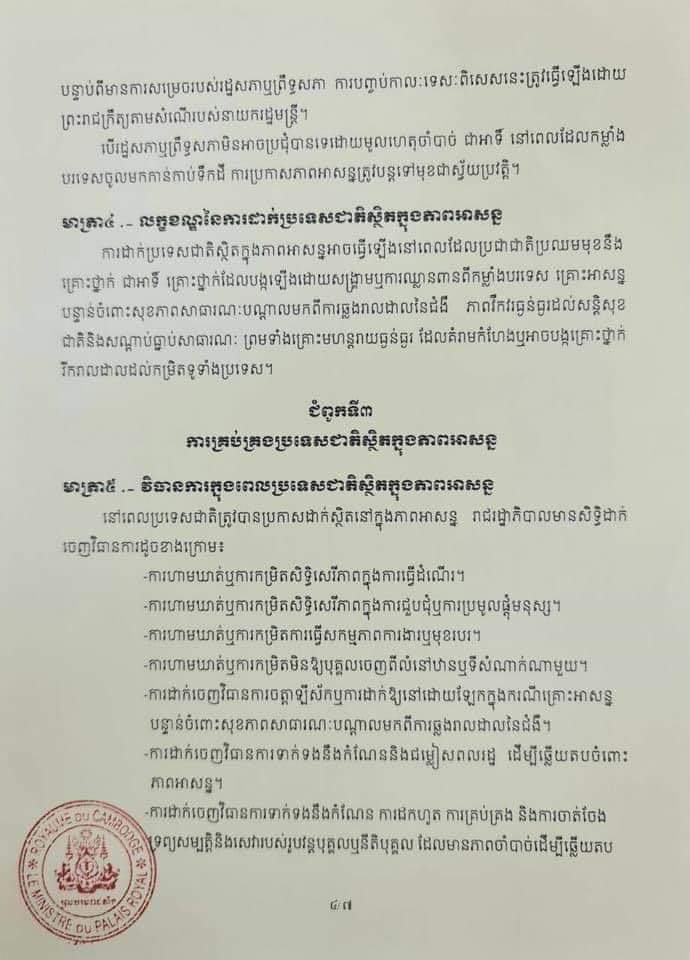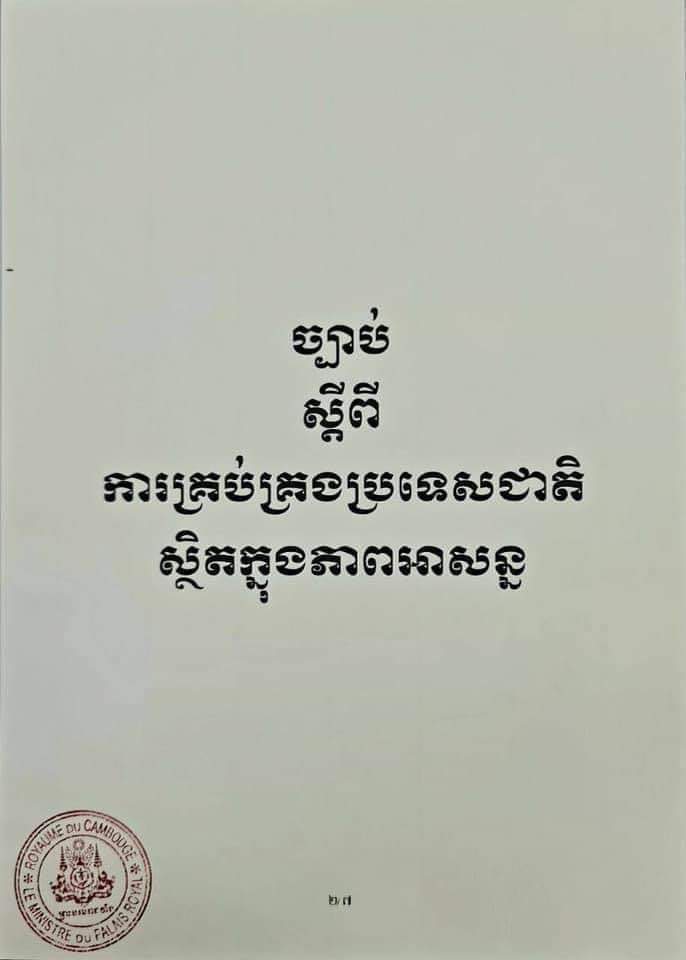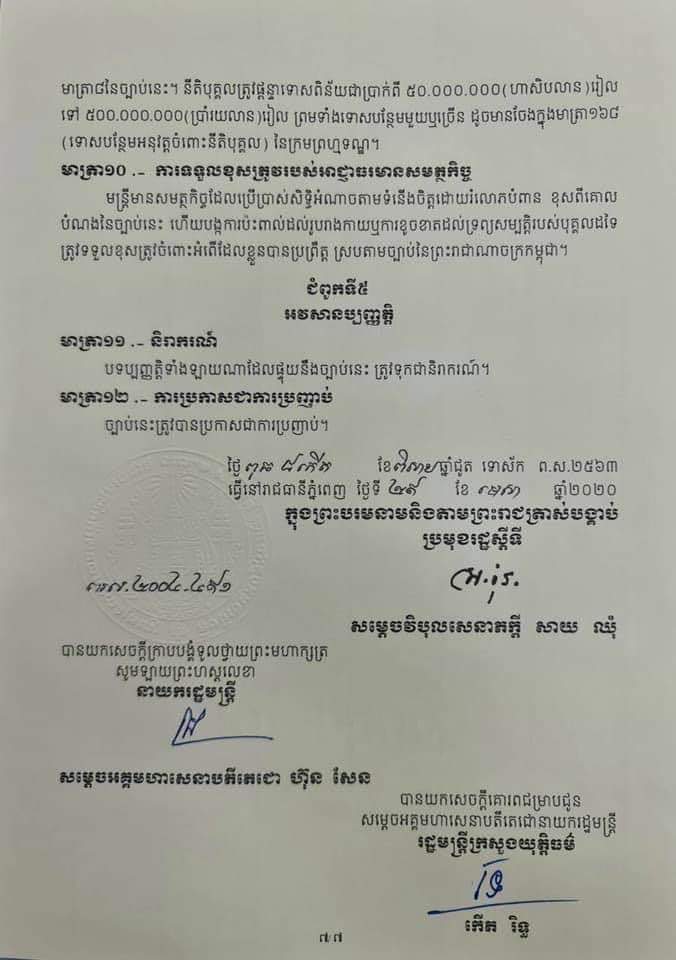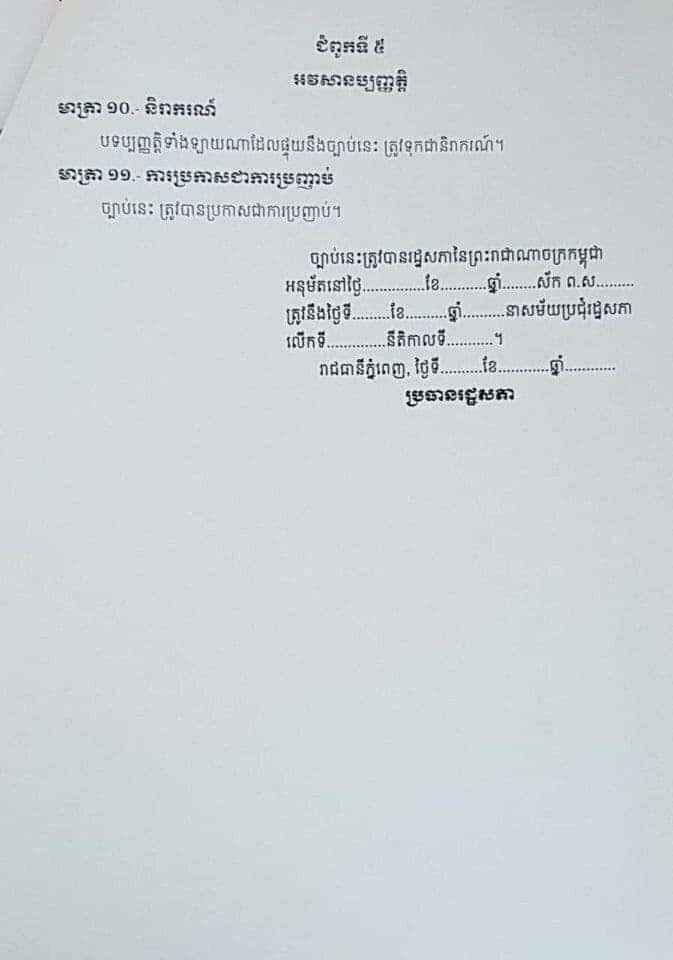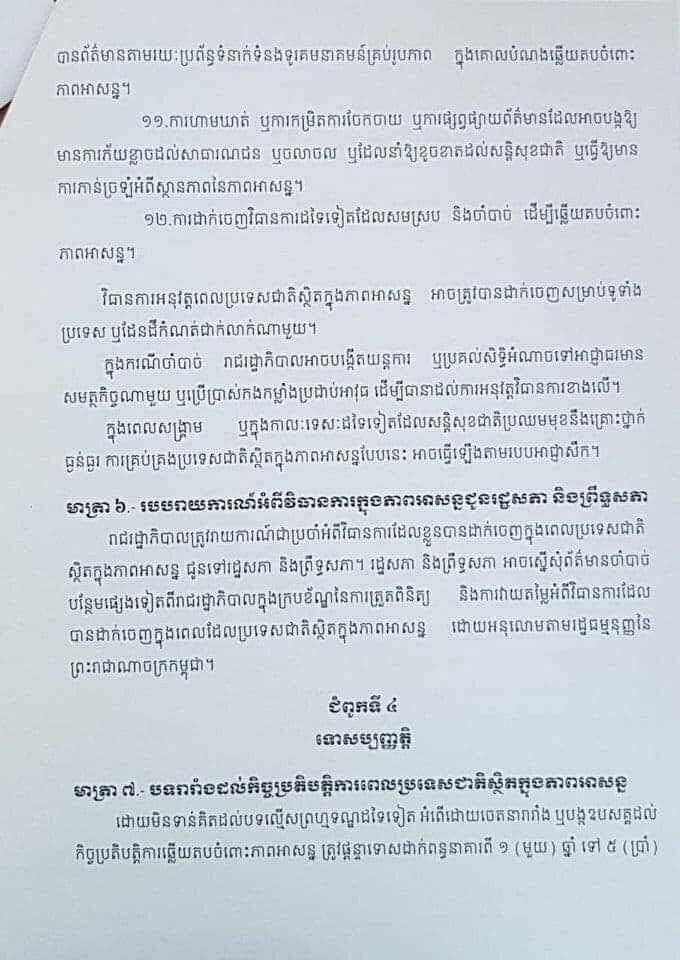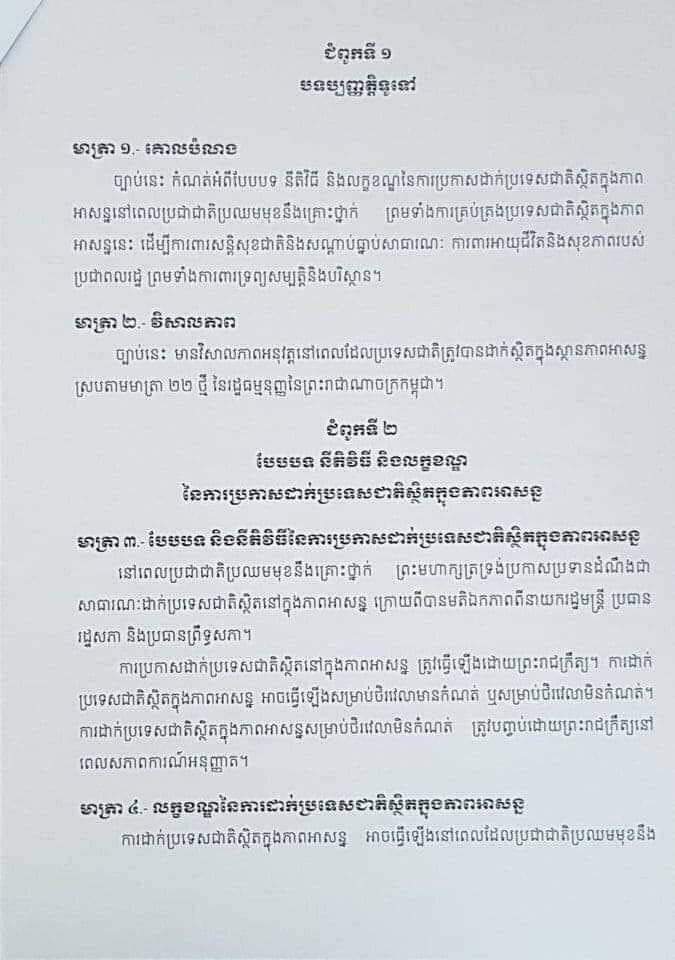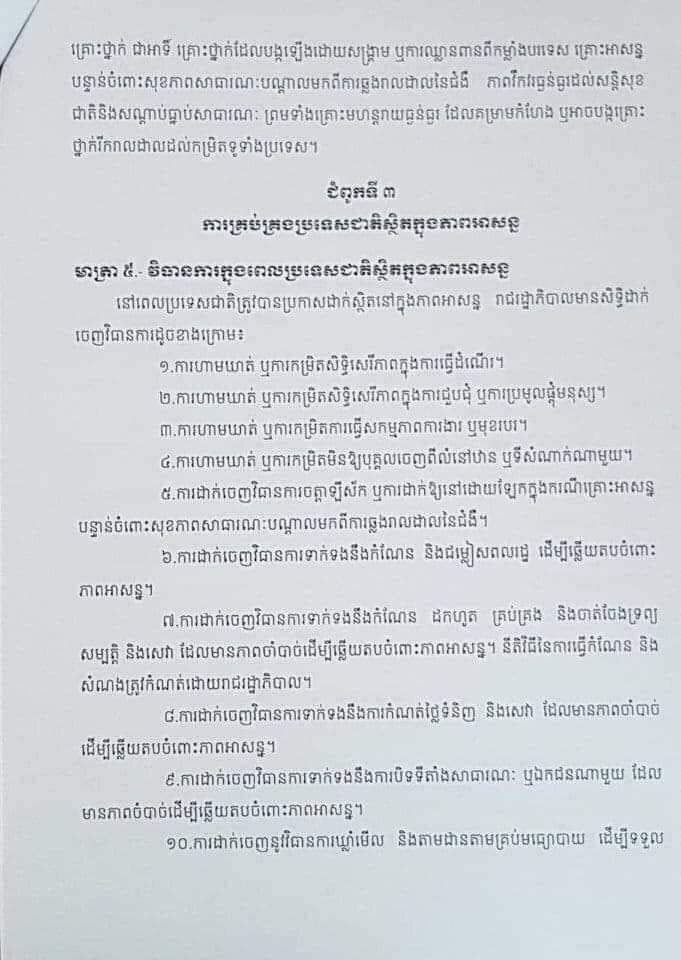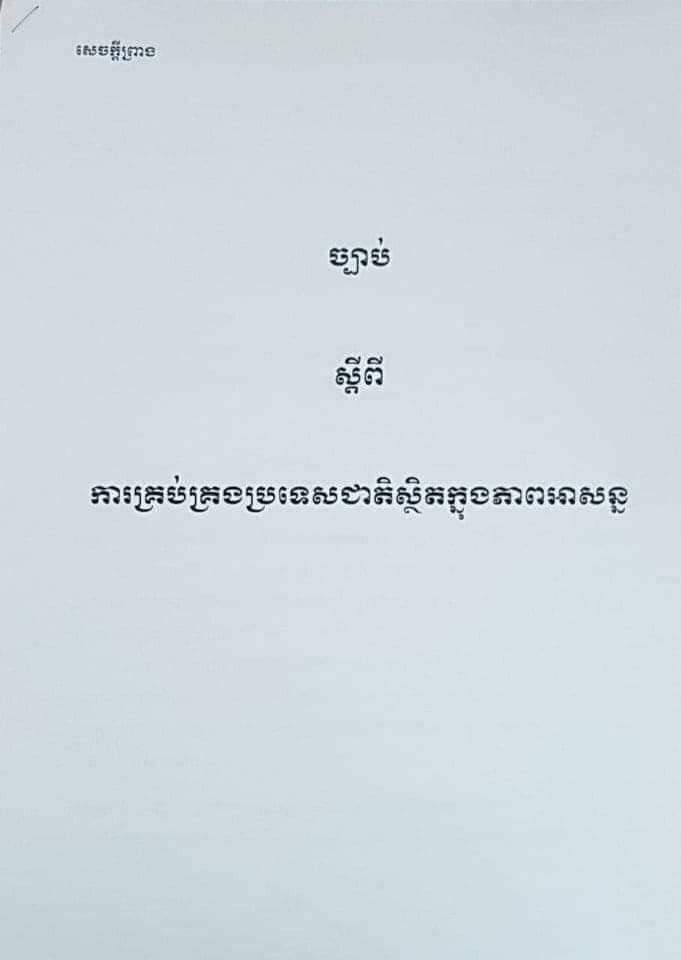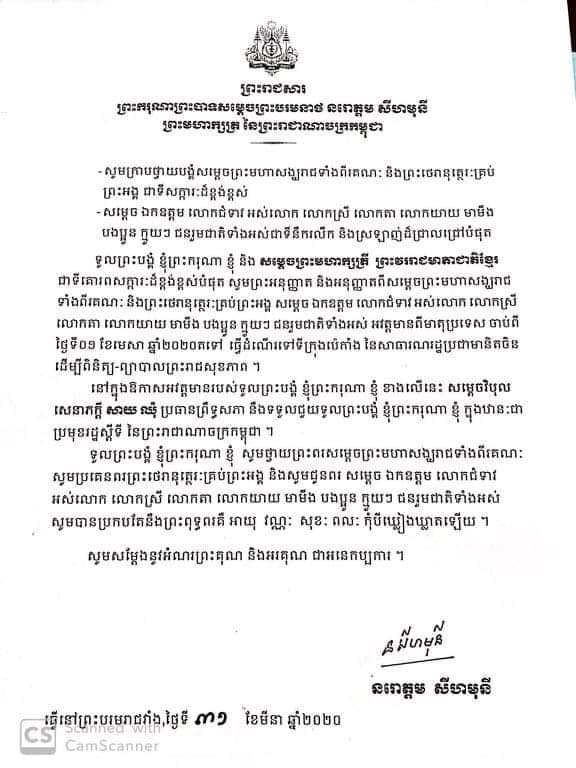សេចក្តីថ្លែងការណ៍រួមស្តីពី ការព្រួយបារម្ភលើការបន្តចាប់ខ្លួនសកម្មជននយោបាយ
June 11, 2020 – by ADHOC- Cambodia
ថ្ងៃព្រហស្បតិ៍ ០៦រោច ខែជេស្ឋ ឆ្នាំជូត ទោស័ក ព.ស ២៥៦៤
ភ្នំពេញថ្ងៃទី១១ ខែមិថុនា ឆ្នាំ២០២០
សេចក្តីថ្លែងការណ៍រួមស្តីពី
ការព្រួយបារម្ភលើការបន្តចាប់ខ្លួនសកម្មជននយោបាយ
យើងខ្ញុំជាអង្គការសង្គមស៊ីវិល សហជីព និងសហគមន៍ សូមសម្តែងការព្រួយបារម្ភយ៉ាងខ្លាំងជុំវិញការចាប់ខ្លួនសកម្មជននយោបាយ ពិសេសអតីតសមាជិកគណបក្សសង្គ្រោះជាតិ ។
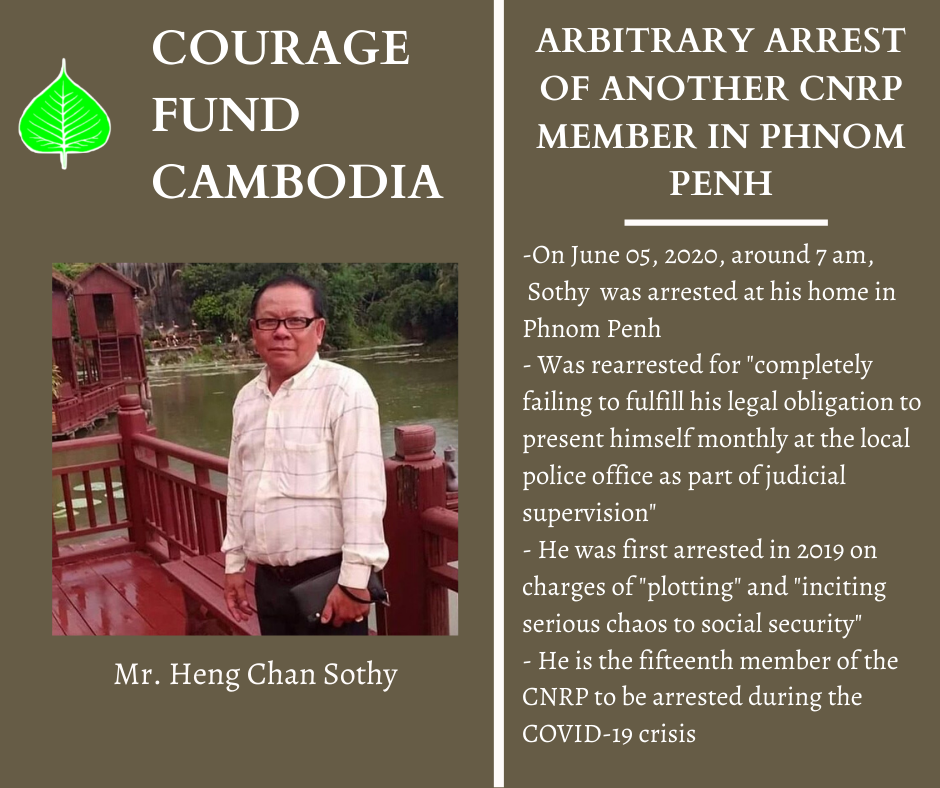
ថ្មីៗនេះ យើងសង្កេតឃើញសមត្ថកិច្ចបានបន្តចាប់ និងឃុំខ្លួនអតីតសមាជិកគណបក្សប្រឆាំងជាបន្តបន្ទាប់ ដោយការចោទប្រកាន់ពីបទ រួមគំនិតក្បត់ ញុះញង់ឱ្យប្រព្រឹត្តបទឧក្រិដ្ឋជាអាទ៍ និង បទញុះញង់ឱ្យយោធាមិនស្តាប់បង្គាប់ ដែលការចោទប្រកាន់ទាំងនេះបានរំលោភយ៉ាងធ្ងន់ធ្ងរទៅលើសេរីភាពក្នុងការបញ្ចេញមតិ និងសិទ្ធិធ្វើនយោបាយរបស់ប្រជាពលរដ្ឋ ដែលទទួលស្គាល់ដោយរដ្ឋធម្មនុញ្ញនៃព្រះរាជាណាចក្រកម្ពុជា សេចក្តីប្រកាសជាសកលស្តីពី សិទ្ធិមនុស្ស និងកតិកាសញ្ញាអន្តរជាតិស្តីពីសិទ្ធិពលរដ្ឋ និងសិទ្ធិនយោបាយ ដែលប្រទេសកម្ពុជាជារដ្ឋហត្ថលេខី ។
រដ្ឋធម្មនុញ្ញនៃព្រះរាជាណាចក្រកម្ពុជា មាត្រា ៥១ថ្មីចែងថា “ប្រជាពលរដ្ឋ គឺជាម្ចាស់វាសនានៃប្រទេសជាតិរបស់ខ្លួន។ អំណាចទាំងអស់ជារបស់ប្រជាពលរដ្ឋ…” មាត្រា៣៥ ចែងថា “ប្រជាពលរដ្ឋខ្មែរទាំងពីរភេទ មានសិទ្ធិចូលរួមយ៉ាងសកម្មក្នុងជីវភាពនយោបាយ …របស់ប្រទេសជាតិ” និងមាត្រា៤១ ចែងថា “ប្រជាពលរដ្ឋខ្មែរមានសេរីភាពខាងការបញ្ចេញមតិរបស់ខ្លួន សេរីភាពខាងសារព័ត៌មាន…។” ដើម្បីឱ្យប្រទេសជាតិមានការរីកចម្រើនលូតលាស់ និងសុខសន្តិភាពពិតប្រាកដទៅបាន គឺទាល់តែប្រជាពលរដ្ឋមានសិទ្ធិសេរីភាពក្នុងការបញ្ចេញមតិ និងសិទ្ធិចូលរួមក្នុងសកម្មភាពនយោបាយបានដោយសេរី និងពេញលេញ។
ក្នុងស្ថានភាពបច្ចុប្បន្នដែលប្រទេសកម្ពុជា ក៏ដូចជាពិភពលោកទាំងមូល កំពុងប្រឈមដោយសារជំងឺកូវិដ១៩ ដែលធ្វើឱ្យប៉ះពាល់យ៉ាងខ្លាំងដល់ចរន្តសេដ្ឋកិច្ច សង្គមកិច្ច ទីផ្សារការងារ និង ភាពភ័យខ្លាចដល់ប្រជាពលរដ្ឋ ។ ហេតុដូច្នេះ ក្នុងនាមយើងខ្ញុំជាអង្គការសង្គមស៊ីវិល សហជីព និងសហគមន៍ ស្នើដល់អាជ្ញាធរមានសមត្ថកិច្ច តុលាការ និងស្ថាប័នពាក់ព័ន្ធបញ្ឈប់ការយាយី និងបន្តចាប់ខ្លួនអតីតសមាជិកគណបក្សប្រឆាំង ក៏ដូចជាប្រជាពលរដ្ឋផ្សេងទៀត ដែលគ្រាន់តែពួកគេសម្តែង មតិដោយសន្តិវិធី។ ជាការពិតណាស់ ការបន្តចាប់ និងឃុំខ្លួនសកម្មជនទាំងនោះ មិនមែនជាជម្រើសដ៏ល្អក្នុងការដោះស្រាយបញ្ហានោះទេ ផ្ទុយទៅវិញ រឹតតែធ្វើឱ្យប្រទេសជាតិជួបនូវវិបត្តិកាន់តែធ្ងន់ធ្ងរបន្ថែមទៀត ព្រមទាំងធ្វើឱ្យសង្គមជាតិទាំងមូល បែកបាក់កាន់តែខ្លាំងឡើងៗ ទៅវិញ។
ដូច្នេះយើងខ្ញុំជា អង្គការសង្គមស៊ីវិល សហជីព និងសហគមន៍ សូមអំពាវនាវដល់រាជរដ្ឋាភិបាល និងភាគីពាក់ព័ន្ធ ដូចតទៅ៖
១. ស្នើដល់អ្នកនយោបាយ ទាំងគណបក្សកាន់អំណាច ទាំងគណបក្សប្រឆាំង និងភាគីពាក់ព័ន្ធទាំងអស់ ត្រឡប់មករកការចរចា ដើម្បីរកដំណោះស្រាយនយោបាយរួមគ្នា ដោយឈរលើគោលការណ៍ប្រជាធិបតេយ្យ និងគោរពតាមរដ្ឋធម្មនុញ្ញ ដោយតម្កល់ផលប្រយោជន៍ប្រជាពលរដ្ឋ និងសង្គមជាតិជាធំ។
២. ត្រូវគោរពសិទ្ធិពលរដ្ឋ សិទ្ធិនយោបាយ និងសេរីភាពបញ្ចេញមតិរបស់ពលរដ្ឋសកម្ម។
៣. ធ្វើការដោះលែងអ្នកជាប់ឃុំដោយរឿងនយោបាយ និងអ្នកទោសមនសិការ
៤. ត្រូវបញ្ឈប់ជាបន្ទាន់នូវការបន្តយាយី ចាប់ និងឃុំខ្លួនសកម្មជននយោបាយ និងពលរដ្ឋសកម្មផ្សេងទៀត ដែលបានប្រើប្រាស់សិទ្ធិស្របច្បាប់របស់ពួកគេ។
គាំទ្រដោយ៖
១ អង្គការសម្ព័ន្ធភាពការពារសិទ្ធិមនុស្សកម្ពុជា (CHRAC)
២ សមាគមការពារសិទ្ធិមនុស្ស និងអភិវឌ្ឍន៍នៅកម្ពុជា អាដហុក (ADHOC)
៣ សម្ព័ន្ធខ្មែរជំរឿន និងការពារសិទ្ធមនុស្ស លីកាដូ (LICADHO)
៤ គណ:កម្មការឃ្លាំមើលការបោះឆ្នោតដោយសេរី និងយុត្តិធម៌នៅកម្ពុជា (COMFREL)
៥ មជ្ឈមណ្ឌលពលរដ្ឋដើម្បីអភិវឌ្ឍន៍ និង សន្តិភាព (PDP-Center)
៦ វិទ្យាស្ថានប្រជាធិបតេយ្យកម្ពុជា(CID)
៧ សម្ព័ន្ធសហគមន៍កសិករកម្ពុជា (CCFC)
៨ មជ្ឈមណ្ឌលសម្ព័ន្ធភាពការងារ និងសិទ្ធិមនុស្ស (CENTRAL)
៩ សម្ព័ន្ធសហជីពកម្មករចំណីអាហារ និងសេវាកម្មកម្ពុជា (CFSWF)
១០ អង្គការកម្មវិធីអភិវឌ្ឍន៍ធនធានយុវជន (YRDP)
១១ មជ្ឈមណ្ឌលសិទ្ធិមនុស្សកម្ពុជា (CCHR)
១២ សហភាពការងារកម្ពុជា (CLC)
១៣ អង្គការតម្លាភាពកម្ពុជា (TIC)
១៤ បណ្តាញយុវជនកម្ពុជា (CYN)
១៥ សមាគមប្រជាធិបតេយ្យឯករាជ្យនៃសេដ្ឋកិច្ចក្រៅប្រព័ន្ធ (IDEA)
១៦ សម្ព័ន្ធគណនេយ្យភាពសង្គម កម្ពុជា (ANSA)
១៧ សមាគមខ្មែរកម្ពុជាក្រោម ដើម្បីសិទ្ធិមនុស្ស និងអភិវឌ្ឍន៍ (KKKHRDA)
១៨ បណ្តាញសហគមន៍ព្រៃឡង់ (PLCN)
១៩ មជ្ឈមណ្ឌលកម្ពុជាដើម្បីការពារសិទ្ធិកុមារកម្ពុជា (CCPCR)
២០ អង្គការការពារសិទ្ធិជនជាតិភាគតិច (MIRO)
២១ អង្គការសិទ្ធិមនុស្សដើម្បីតម្លាភាព និងសន្តិភាព (HROTP)
២២ កម្ពុជាឯករាជ្យប្រឆាំង (CIACC)
២៣ សម្ព័ន្ធដើម្បីសុចរិតភាព និងគណនេយ្យភាពសង្គម (CISA)
២៤ អង្គការក្រុមការងារដើម្បីដោះស្រាយទំនាស់ (ACT)
២៥ មជ្ឍមណ្ឌលអប់រំច្បាប់សម្រាប់សហគមន៍ (CLEC)
២៦ អង្គការអភិវឌ្ឍន៍សំលេងសហគមន៍ (BCV)
២៧ សមាគមឥន្ត្រទេវី (IDA)
២៨ អង្គការសកម្មភាពប្រជាជនដើម្បីការអភិវឌ្ឍន៍ (PADO)
២៩ អង្គការស្ម័គ្រចិត្តដើម្បីសង្គម (CVS)
៣០ បណ្តាញយុវជន CamAsean (CamAsean)
Thursday June 11th, 2020 – Original Source for Your Reference: ADHOC- Cambodia
Phnom Penh, June 11, 2020
Joint Statement On
The Concerns about Ongoing Arrests of Political Activists
We, the undersigned Cambodian Civil Society Organizations, Trade Unions and Communities, would like to express our grave concerns over the arrest of former political activists, specifically of former members of the Cambodian National Rescue Party.
Continue reading


